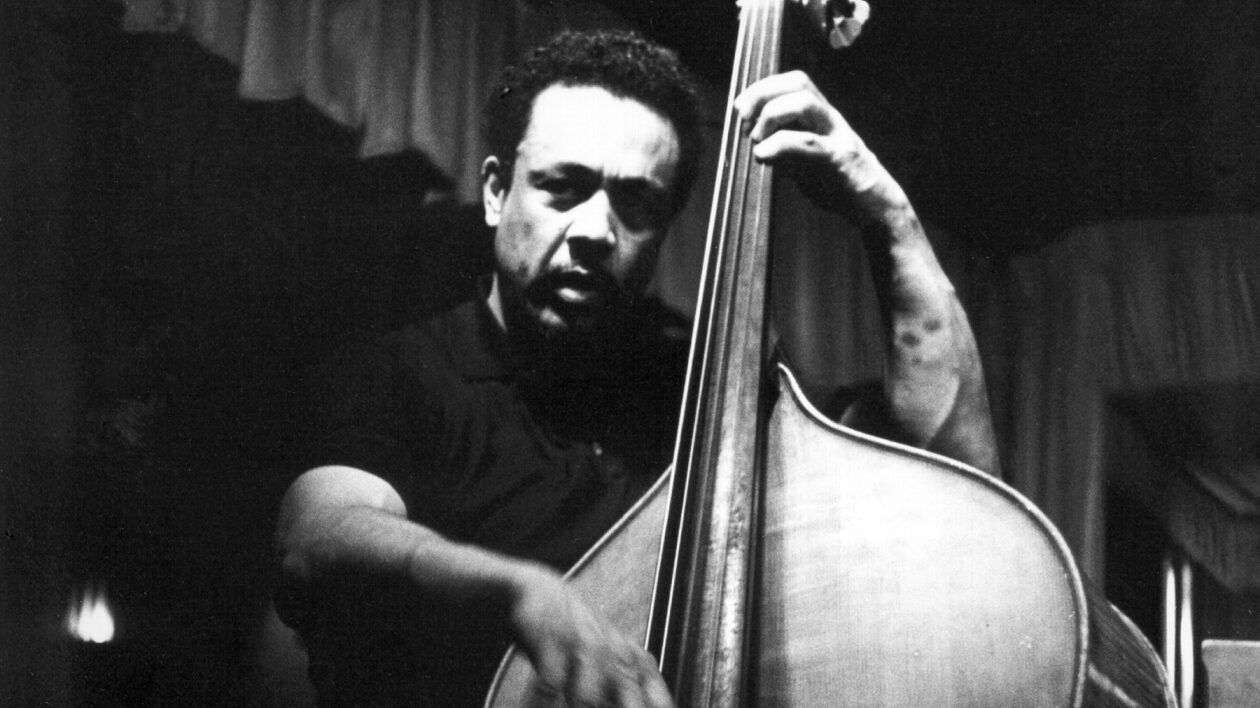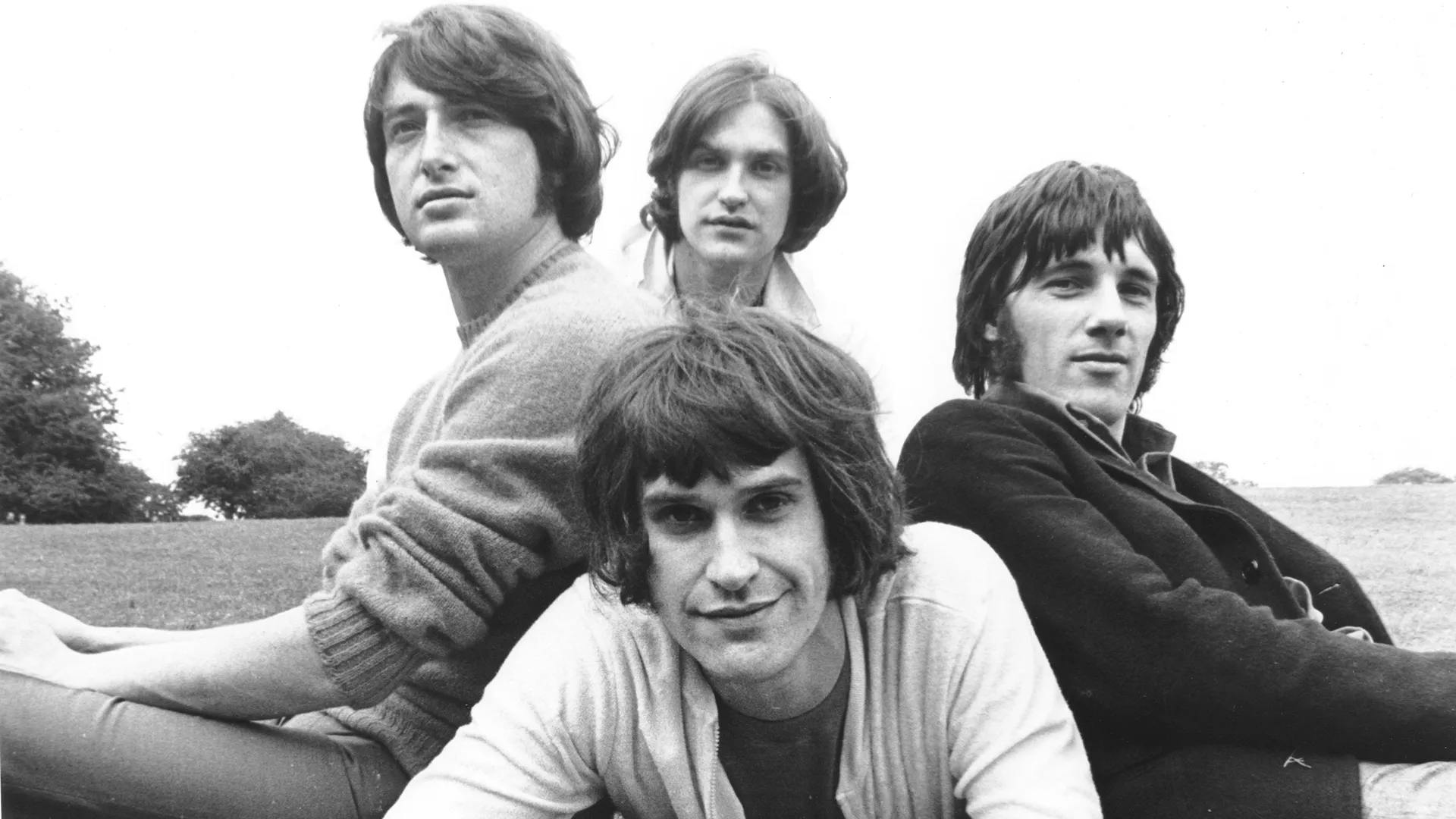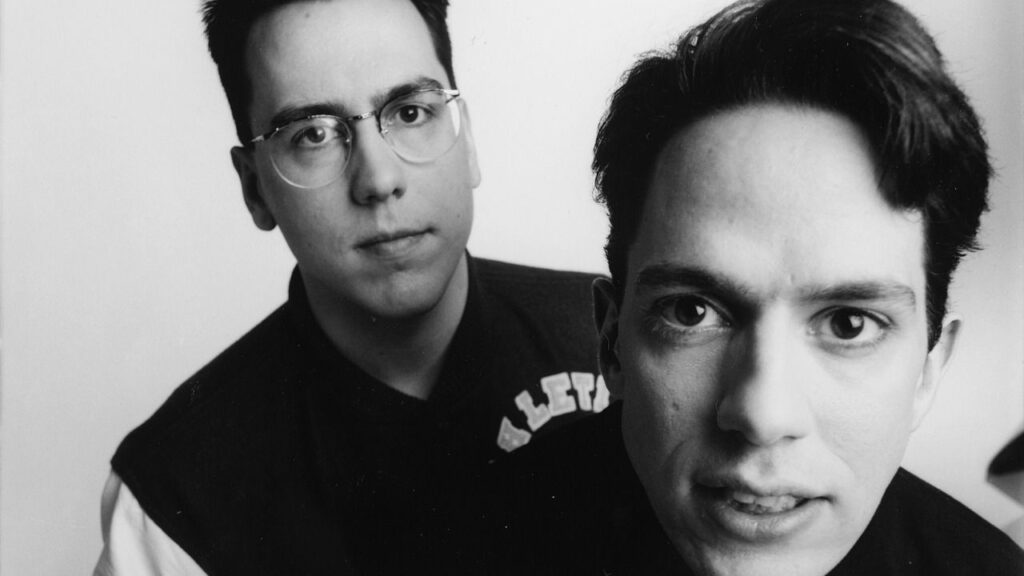
Music nerds love ranked lists. Music nerds love thoughtful commentary. Music nerds love carefully curated playlists. Catalog Crawl provides all of these things and more. In these features, Strange Currencies takes an exhaustive look at the discographies of our favorite artists – the ones who reside at the core of our music obsession.
On the surface, the wild movement of underground acts to the mainstream that occurred during the eighties and nineties produced no more bizarre success story than that of They Might Be Giants. The duo of John Linnell and John Flansburgh met as teenagers in Lincoln, Massachusetts, and reconnected after both moved to Brooklyn in their early-twenties. Sharing a love of music and pop culture, the Johns began recording brief, offbeat songs in Flansburgh’s apartment, and eventually hit the New York art scene with outlandish public appearances that were part rock concert, part performance art, and part prop comedy.
Despite these humble beginnings and the decidedly off-kilter nature of their recorded material, They Might Be Giants would grow to become one of the biggest indie groups in America by the end of the eighties, and move to the major label Elektra by the time of 1990’s Flood. That record would provide the duo with their commercial breakthrough, and a longstanding existence on the periphery of the mainstream that continues over three decades later. With a constantly-evolving career that has found them embracing a full band lineup, releasing several children’s albums, and making notable contributions to film and television soundtracks, They Might Be Giants have become a touchstone for multiple generations of “left of the dial” listeners.
While humor, wit, and an oft-cited “quirkiness” are undoubtedly central to their appeal, They Might Be Giants have ultimately persisted as a beloved act – and not a mere novelty – for one reason: their undeniable gift for melody. From the outset of their career, both Linnell and Flansburgh have demonstrated a mastery of pop hooks that rivals any of their contemporaries. Whether on their earliest four-track recordings or their incidental music for Malcolm in the Middle, the Johns have always kept those skills at the forefront of their work.
Over a musical partnership that will reach forty years this August, They Might Be Giants have released over two dozen albums, and both Linnell and Flansburgh have been involved in a number of side projects. Approaching any artist with that volume of material can be a daunting task, and while the common perception is that They Might Be Giants peaked prior to their embrace of a full band on 1994’s John Henry, their entire career has been marked by brilliant songs and satisfying albums. In this feature, Remy and I attempt to provide some guidance from the perspective of two long-time fans, albeit ones from different generations.
Admittedly, we’ve defined TMBG’s catalog in a way that might frustrate long-time fans and completists. Most notably, we have not included the band’s five children’s albums, though not for lack of affection for them. The first of those albums, No!, was released less than two weeks after one of the authors of this piece was born, was purchased for them by the other, and has maintained a consistent place in their CD collection/iPod/hard drive ever since. It just seems hard to evaluate those projects on the same criteria as TMBG’s “adult” albums, but we promise to cover them at some point in the future. Next, we have excluded the group’s outtakes collections from recent-ish albums, partly because of streaming availability. Somewhat contradictory to this, we did include the 1991 B-sides collection, Miscellaneous T, as that release has always been viewed as canon by one of us. 2018’s The Escape Team was excluded, largely due to the fact that it is currently unavailable on streaming services. Finally, we opted to include the three full-length side/solo projects from the two Johns – Linnell’s 1999 release State Songs, and Flansburgh’s two albums with Mono Puff. What this leaves is a somewhat-curiously-arrived-at catalog of twenty albums.
For the playlist, Remy and I decided to set just one limitation. When picking songs, we have deliberately avoided They Might Be Giants’ most iconic tracks, which meant excluding the four that appeared on Strange Currencies’ A Century of Song project (“Don’t Let’s Start,” “Ana Ng,” “They’ll Need a Crane,” and “Birdhouse in Your Soul”), and the two that introduced the group to millions by way of their 1990 appearance on Tiny Toon Adventures (“Istanbul (Not Constantinople)” and “Particle Man”). Everything else was fair game, though we did consider which track from each record would fit best on the playlist, and didn’t necessarily pick each album’s best track. You’ll find it embedded at the end of this article. Enjoy! — MR
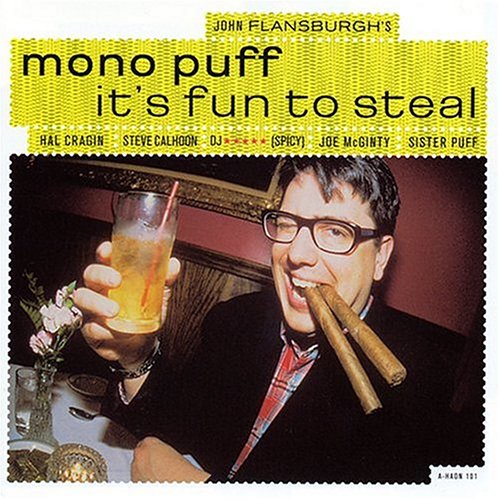
Mono Puff
It’s Fun to Steal
1998
(5.6)
20
We really do love John Flansburgh here at Strange Currencies, but it’s hard to pretend that something significant wasn’t lost when he assumed a sole leadership role in the TMBG side project, Mono Puff. The names that accompanied Flansburgh’s on the cover of the group’s second record, It’s Fun to Steal, don’t exactly make up for the absence of John Linnell, and these often half-baked tracks largely fail to leave a lasting impression. With that said, there are a handful of songs here that any TMBG fan would find worth holding onto: for me these include the amiable title track, the driving “Backstabbing Liar,” and the genuinely groovy opener, “Creepy.”
One for the playlist: Of those aforementioned songs, it’s “Backstabbing Liar” – with its propulsive beat and descending distorted guitar riff – that will sound the most at home on a playlist of classic TMBG tracks. — MR
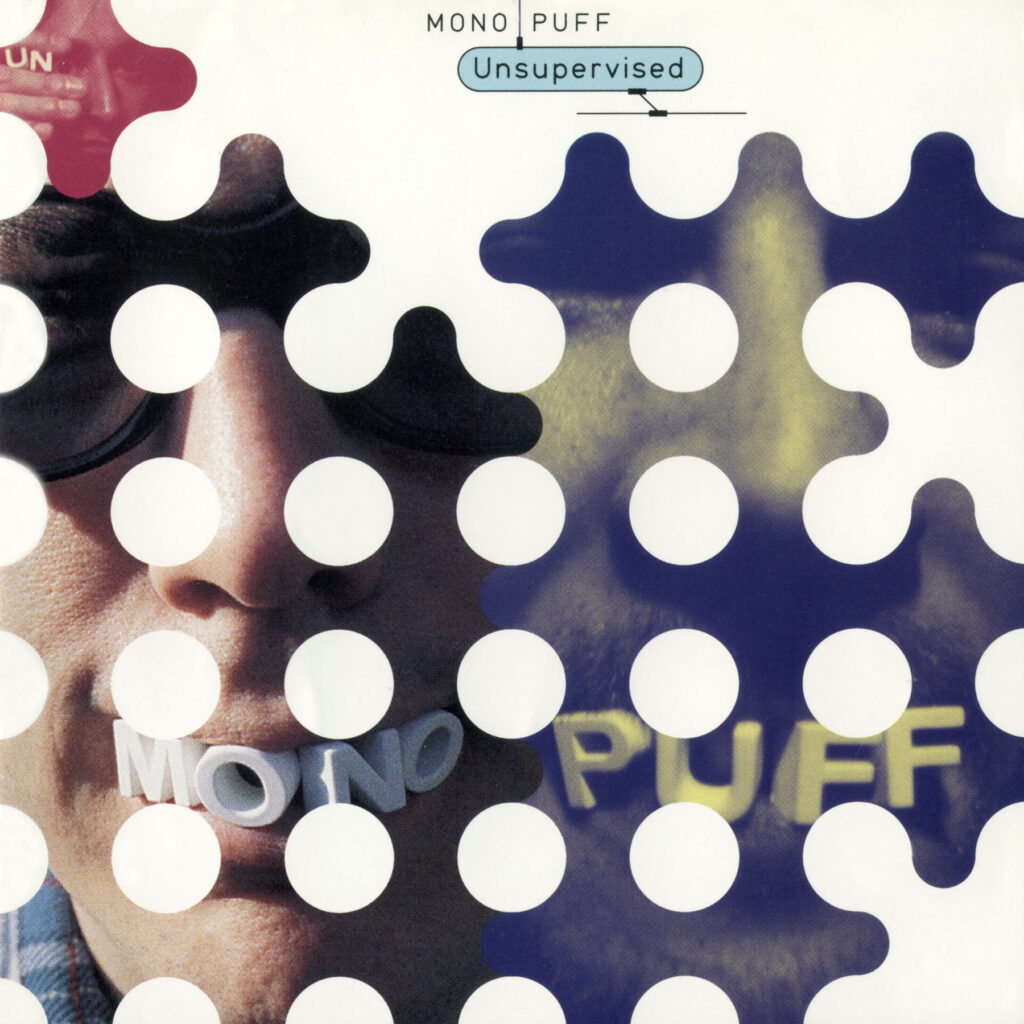
Mono Puff
Unsupervised
1996
(5.7)
19
Mono Puff’s debut record edges out It’s Fun to Steal by the slimmest of margins. While the high points of the latter album are arguably more impressive, Unsupervised minimizes the genre experiments that provided It’s Fun to Steal with its more tedious moments. In fact, whether by design or by accident, Unsupervised is front-loaded, to the point of where its A-side could be considered a genuinely rewarding listen, while the B-side proves to be largely forgettable. Then again, TMBG superfans are likely to find at least a few worthy tracks scattered throughout Unsupervised.
One for the playlist: We had some debate about including the opening surf rock instrumental, “Guitar Was the Case,” but it’s the next track, “Unsupervised, I Hit My Head,” that will likely appeal most to They Might be Giants fans. — MR
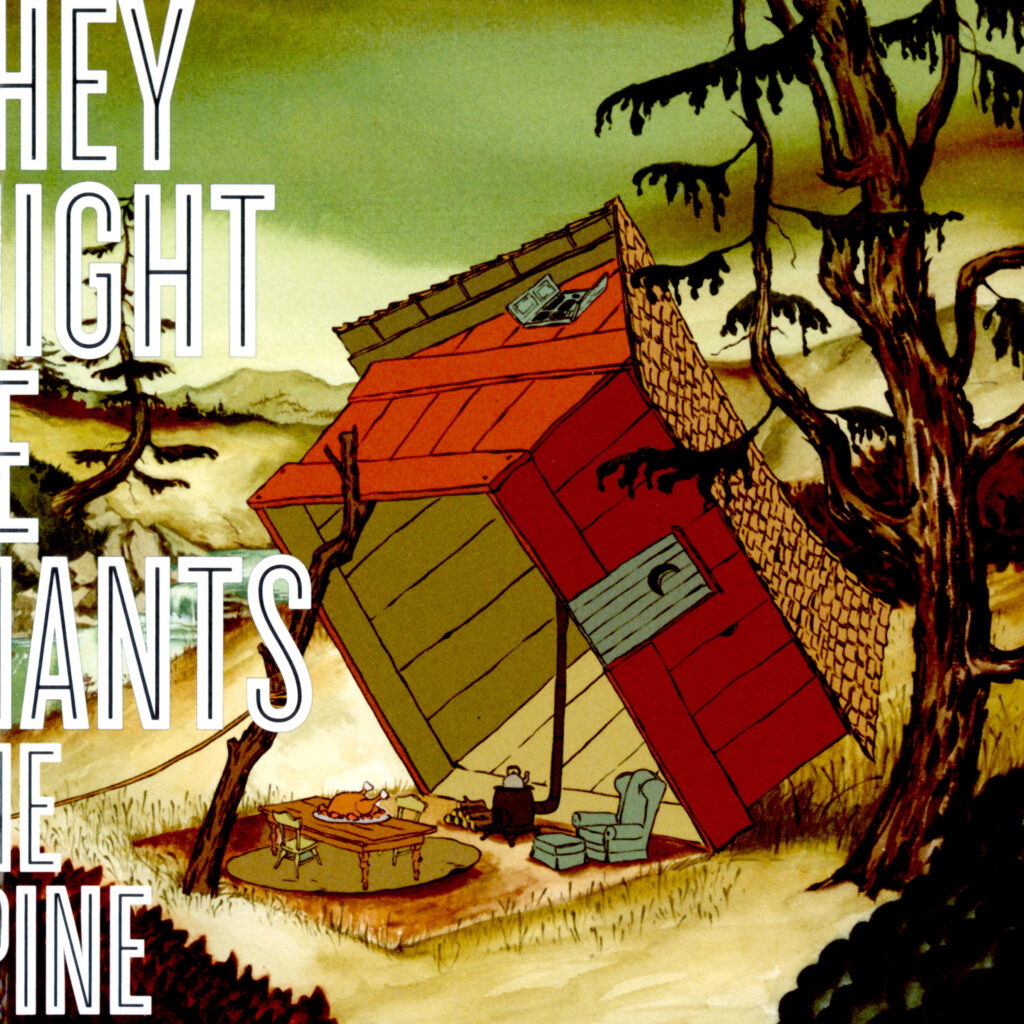
The Spine
2004
(6.1)
18
Falling squarely between the group’s first two children’s albums, The Spine finds They Might Be Giants at the tail end of an era of diminishing returns. Unfortunately, the creativity and utter weirdness that the Johns had become known for during their drum machine days still hadn’t quite found its footing with a full band, leaving this LP to feel bland in the grand scheme of their discography. That being said, The Spine still has its moments of solid lyricism, songwriting, and arrangements that both harken back to their eighties work and preview the TMBG of the then-near future.
One for the playlist: The most enjoyable moments of The Spine show just how much of a knack the Johns had for writing infectious power pop singles to rival any other group. No other track better reaches these heights than the album opener, “Experimental Film,” in which all elements that make TMBG a great band combine to establish a standard that the rest of the album couldn’t quite meet. — RG
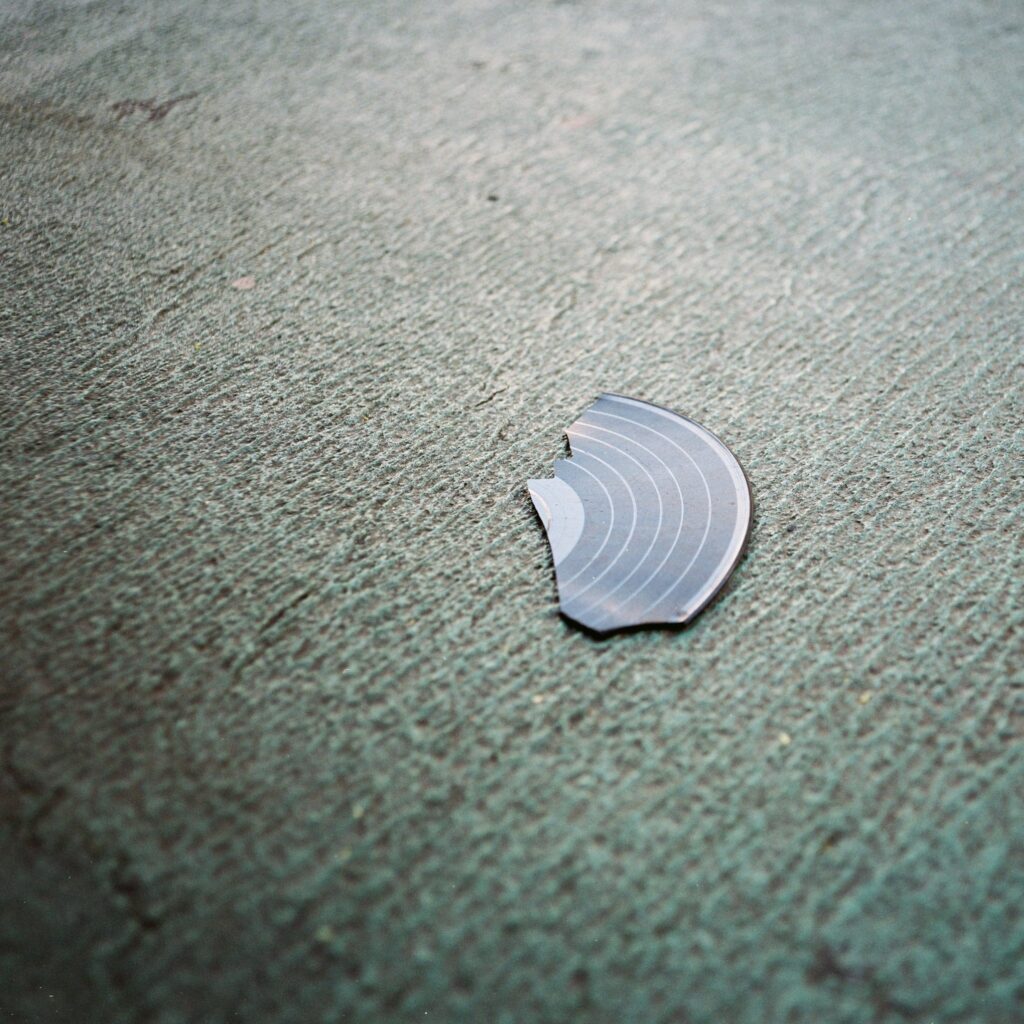
BOOK
2021
(6.3)
17
If anything, They Might Be Giants’ newest album is a testament to how consistent the group has been for over thirty years. While not necessarily a highlight of their discography, BOOK once again proves that they always have at least a few good songs in them per album. Tracks like “I Broke My Own Rule,” “Brontosaurus,” and “Part of You Wants to Believe Me” are some of the group’s catchiest songs of the 21st century, and prove that there’s still hope for another great TMBG release in the coming years.
One for the playlist: While the three above mentioned songs are very good, BOOK’s closing track, “Less Than One,” takes the spot for this playlist, almost entirely because of how infectious it is. The song’s steady backing piano and simple drums work well to let the Johns’ vocal harmonies take center stage. — RG
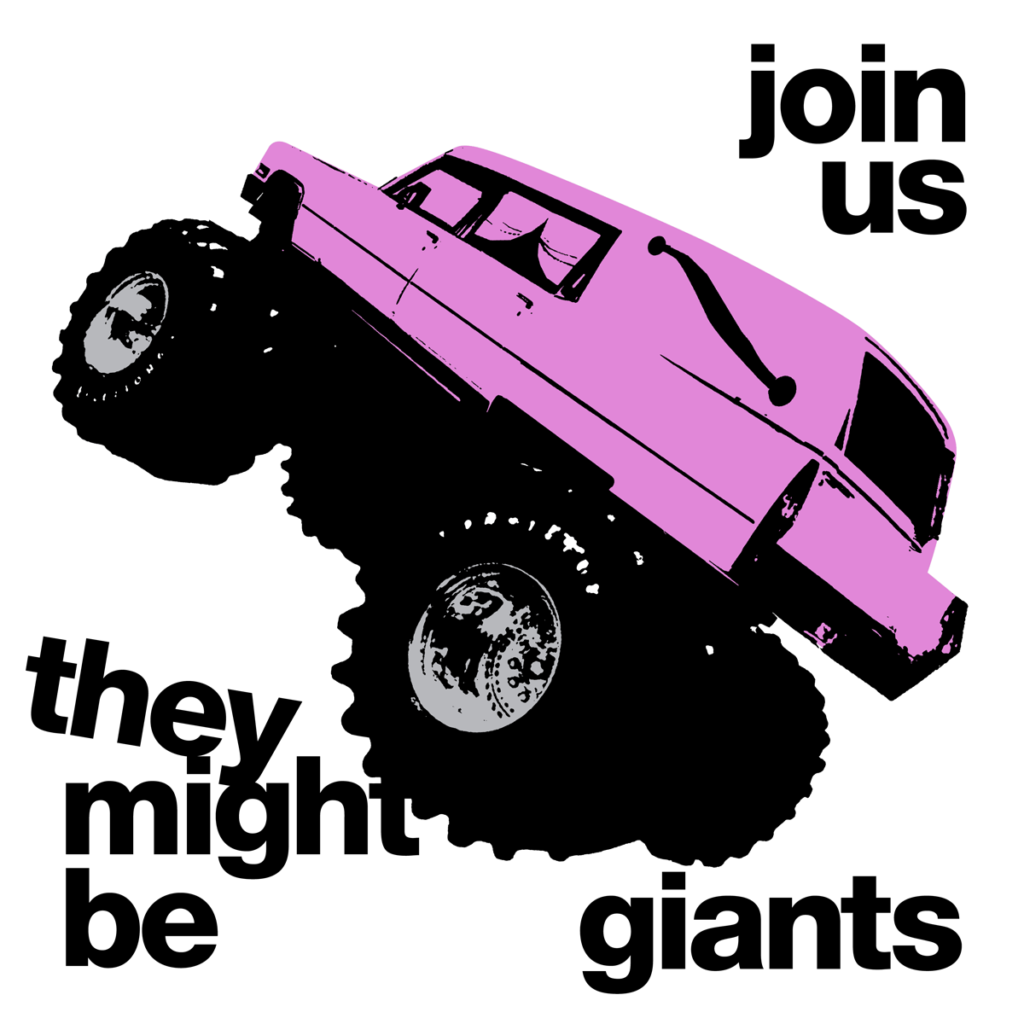
Join Us
2011
(6.3)
16
They Might Be Giants fandom is an inherently weird thing. Aside from some Gen-Zers raised on a mix of TMBG’s children’s and adult albums, everyone I know that cares about the band arrived at them some time between the ages 8-14, and has held an on-again/off-again love affair with the group – these peaks and valleys often coinciding with their own kids’ discovery of the group. To those who have remained consistently committed to keeping up with the band in real-time, there seems to be a surprising lack of consensus about their catalog – aside from a belief that anyone who is less than a diehard tends to overrate the group’s early work at the expense of their later albums. Problem is, there is little agreement as to where the early-material-favoring fans should turn. For example, scanning comments on RateYourMusic, one will see many long-time fans calling Join Us the band’s weakest effort, but go to the page for any subsequent album, and you’ll see different commenters citing it as “their best since Join Us.” To the ears of this listener, Join Us doesn’t make a compelling case as a late-career standout, but there’s also little about it that fails outright. In conversation with my co-author of this piece, I’ve speculated that we (the two of us, and the greater “we”) perhaps form bonds with TMBG albums (or any record, really) due to familiarity as much as quality. Those who have heard this album a lot probably love it. I’ve just not been compelled to return to it enough to make it all that familiar.
One for the playlist: Previous bloviation aside, I have gone back to the opening “Can’t Keep Johnny Down” enough times for it to register. It possesses most of the markings of a true TMBG classic, nearly thirty years into the band’s career. — MR
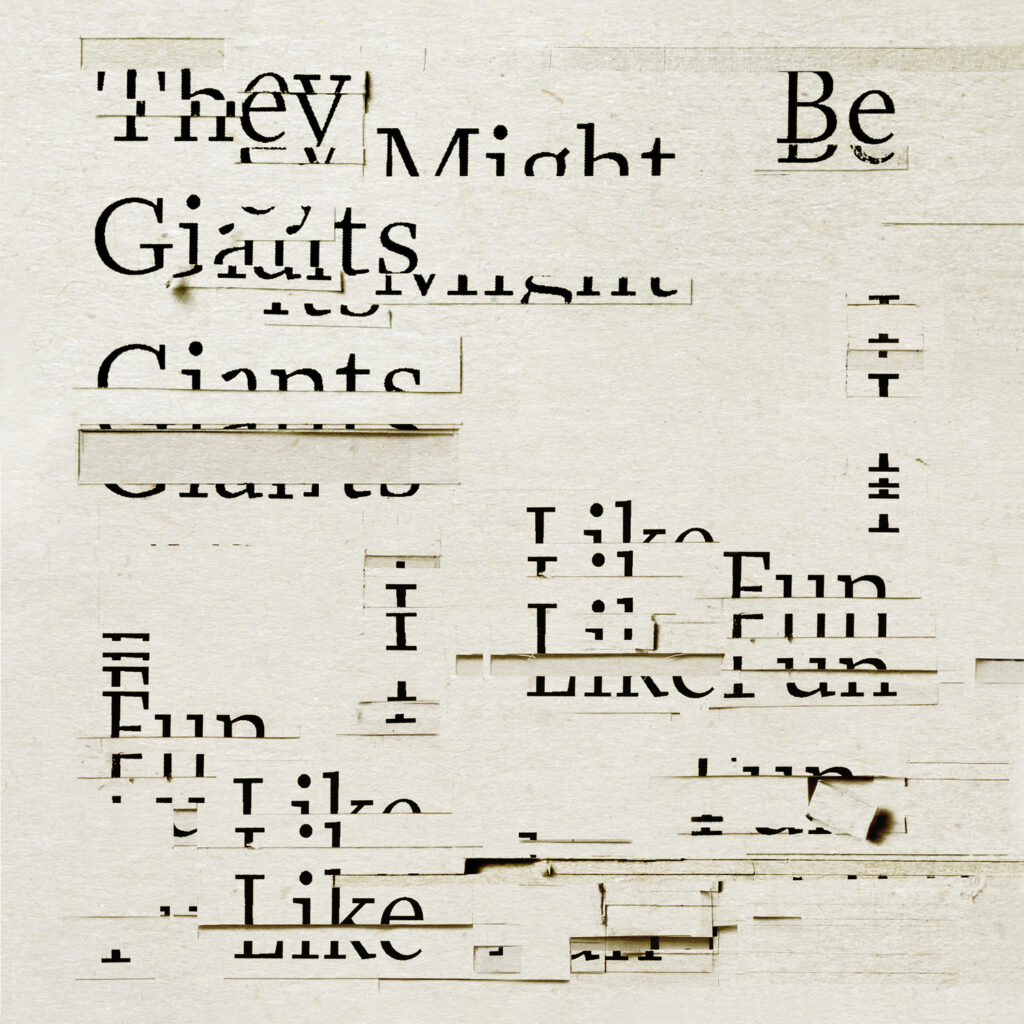
I Like Fun
2018
(6.4)
15
They Might Be Giants were always a band for outsiders, nerds, and weirdos who saw the rest of the world through their own unique lenses; so what happens when the Johns try to look away from some of that uniqueness for a more stripped-down sound and lyrical style? I Like Fun tries to answer this question, with relatively mixed results. While the songwriting is never bad, and the stripped-back production is an interesting change of pace, it’s never enough to help I Like Fun rise above the lower third of the band’s discography.
One for the playlist: A “cleaner” sounding TMBG was an interesting direction for the band to go, and while it doesn’t really work for an entire album, “Push Back the Hands” proves the merit behind the move.– RG
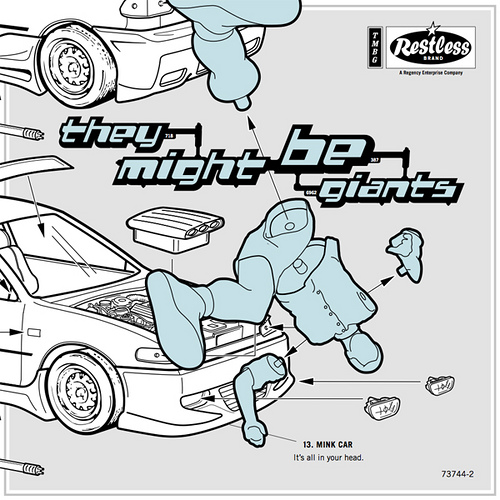
Mink Car
2001
(6.4)
14
The long-awaited proper follow-up to 1996’s Factory Showroom arrived on September 11th. The September 11th. Context certainly didn’t help Mink Car, nor did the lack of enthusiasm from their record label, Restless. However, two decades down the road, it’s more a series of unforced errors that truly mar the album. The finalized Mink Car tracks often sound like lesser versions of their earlier counterparts: namely “Older,” and a slowed-down take on the Severe Tire Damage live highlight, “Another First Kiss.” For many fans, myself included, the combination of a lengthy wait and an underwhelming end result signaled the end of TMBG hyper-fandom, but while occasionally frustrating, Mink Car remains better than its reputation would suggest.
One for the playlist: Mid-tempo tracks like “Hovering Sombrero” and “Hopeless Bleak Despair” have aged well, but it’s the early-album standout “Cyclops Rock” that leaves the strongest first impression. I do wish that they had retained the original opening verse (“I’m sick, like Nixon was sick”) though. — MR
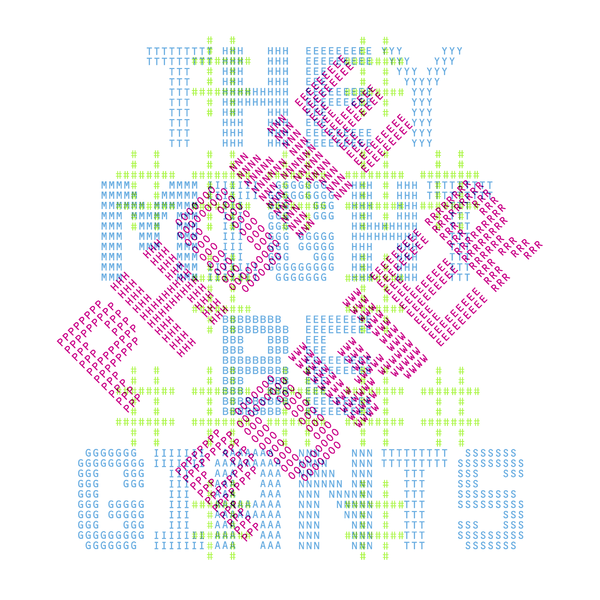
Phone Power
2016
(6.5)
13
Being the second release within the years of 2015-16, Phone Power came out during one of the most productive stretches of TMBG’s career. This rediscovered energy lends itself well to the Johns’ songwriting on this album, and multiple tracks show off a more psychedelic or sixties-influenced sound than any other record in their discography. While the sound of the album is definitely worth a listen, the best songs aren’t quite as immediate as they are on some the projects surrounding Phone Power, leaving the truly interesting moments feeling a bit wasted.
One for the playlist: While not quite as immediately engaging as other tracks on Phone Power, “I’ll Be Haunting You” grows to become a really interesting piece, mixing the usual TMBG power pop with some subtle psychedelic elements, à la XTC. — RG
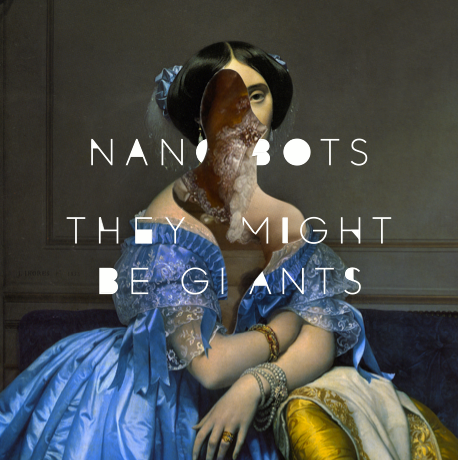
Nanobots
2013
(6.7)
12
2013’s Nanobots must have felt like a breath of fresh air for They Might Be Giants, as the band sounds completely energized in a way that they hadn’t since 2007’s The Else. After seven years of kids albums and 2011’s underwhelming Join Us, Nanobots sees the group finding a bit of the creative energy that defines their best work. Songs like “Black Ops,” “Lost My Mind,” and especially “You’re On Fire” help to curate a solid collection of tracks that would usher in a new decade of productivity for the band.
One for the playlist: An easy choice for the playlist – not because the rest of the tracks on Nanobots are lacking – “You’re On Fire” stands as one of the best John Linnell-penned songs of the 21st century. Much like the hits of the band’s first decade, “You’re on Fire” shows off their almost supernatural ability to mix catchy melodies with absurd lyrics. — RG
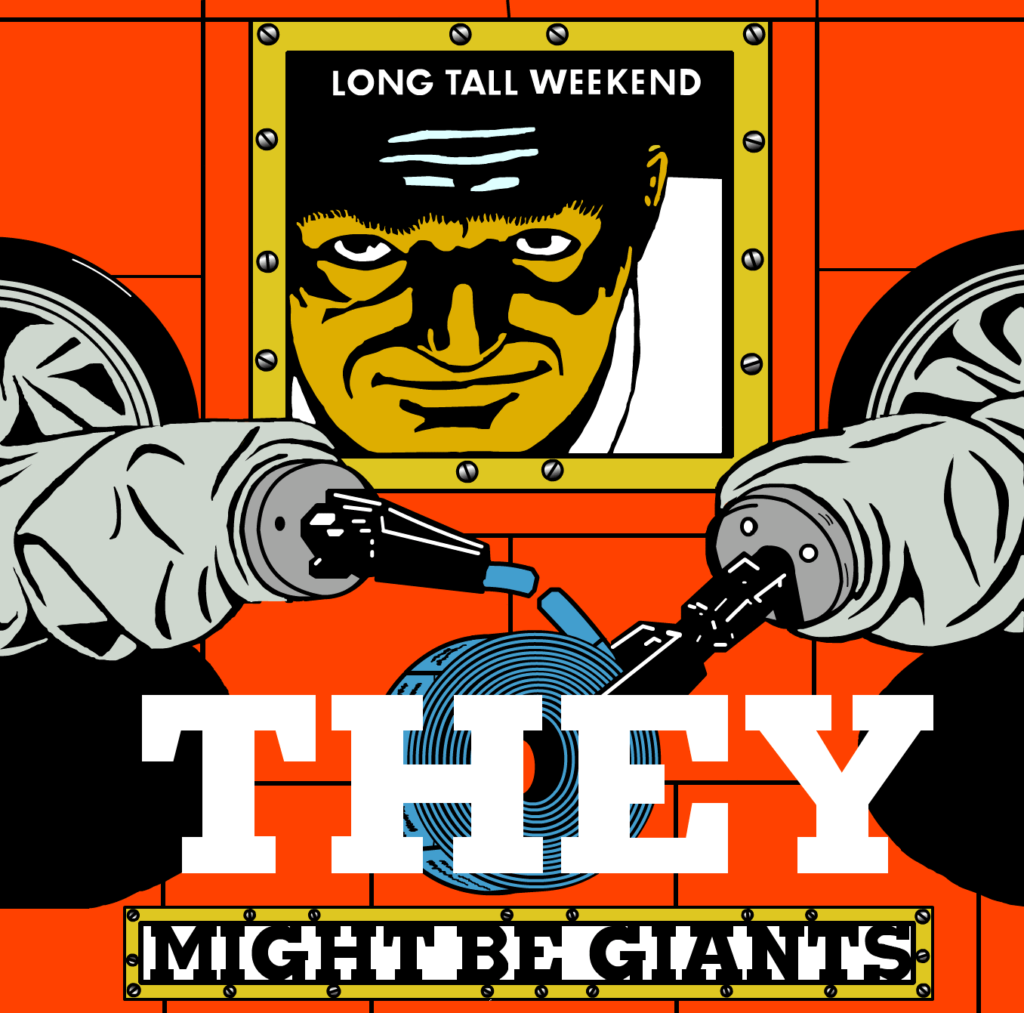
Long Tall Weekend
1999
(6.8)
11
Appearing during the long interval between Factory Showroom (1996) and Mink Car (2011), Long Tall Weekend was greeted as a bit of a curiosity upon its arrival. For starters, it was released exclusively online through the service eMusic (the first such instance by a major label band). Secondly, Long Tall Weekend was of a decidedly low-key vibe. Several songs sounded practically skeletal and half-cooked when compared to those on the group’s recent records. However, despite its mixed reception among fans, Long Tall Weekend houses a number of hidden gems and fan favorites. No longer an outcast in the catalog – at a time in which many listeners access music exclusively online – Long Tall Weekend is deserving of a reevaluation by those who dismissed it the first time around.
One for the playlist: There are a few strong contenders here, including the charming “Lullaby to Nightmares” and the original (superior) version of “Older.” However, we’re big fans of Lesley Gore’s “Maybe I Know,” and the Giants turn in a solidly faithful take of it here. — MR
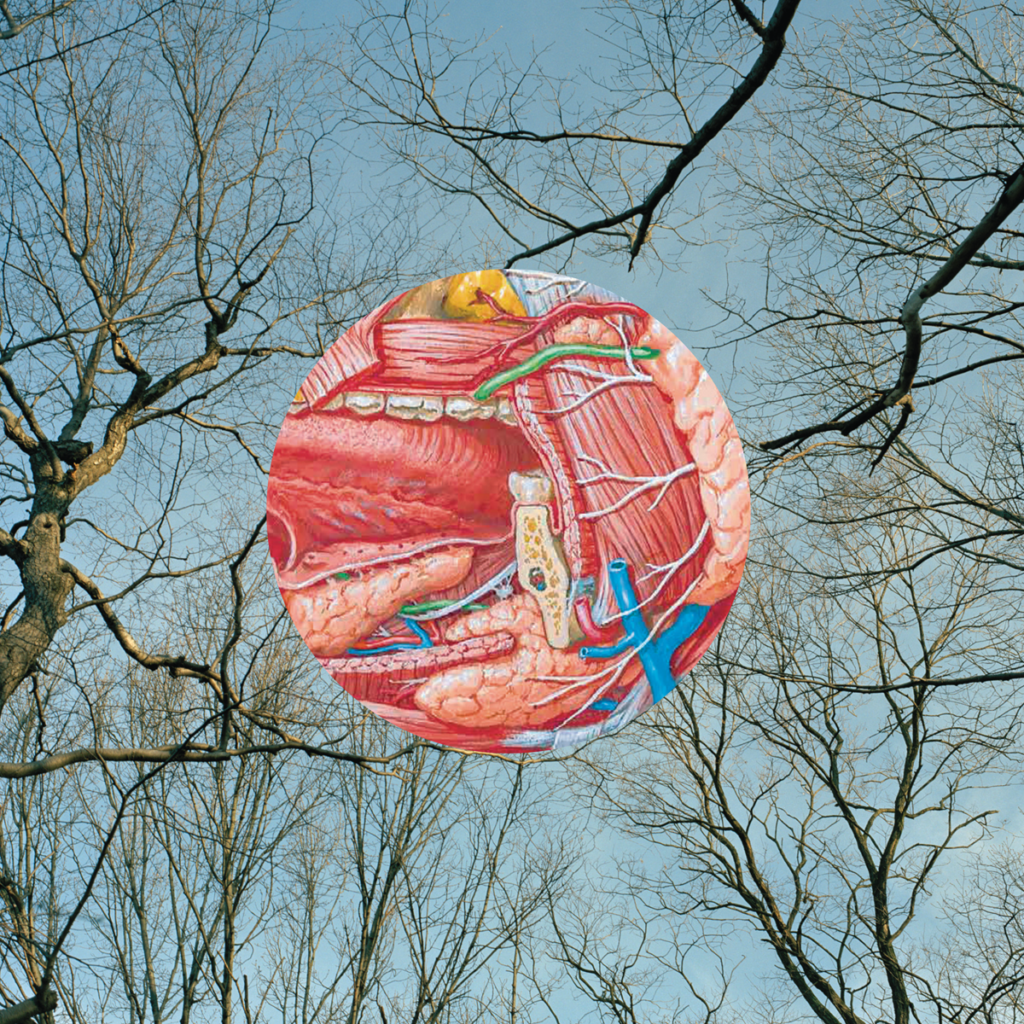
Glean
2015
(6.9)
10
I’m pretty confident in saying that Glean is the best They Might Be Giants album of the 2010s. Building from the momentum that 2013’s Nanobots created, Glean is again able to harness just enough of the creative weirdness of peak-era TMBG, while doing the best job in modernizing the sounds that fans had come to know so well. While still suffering from some of the inconsistencies that have come to define modern day They Might Be Giants, Glean helps to remind listeners that the band’s appeal has always been at its highest when they make music that is just fun to listen to.
One for the playlist: Glean also reminds listeners just how catchy They Might Be Giants can be in their best songs, and the opener “Erase” is a prime example. Sounding a bit like a holdover from 2007’s louder The Else, “Erase” matches its heavier guitars with equally dark lyrics about murder and strangulation that create one of their most engaging songs to date. — RG
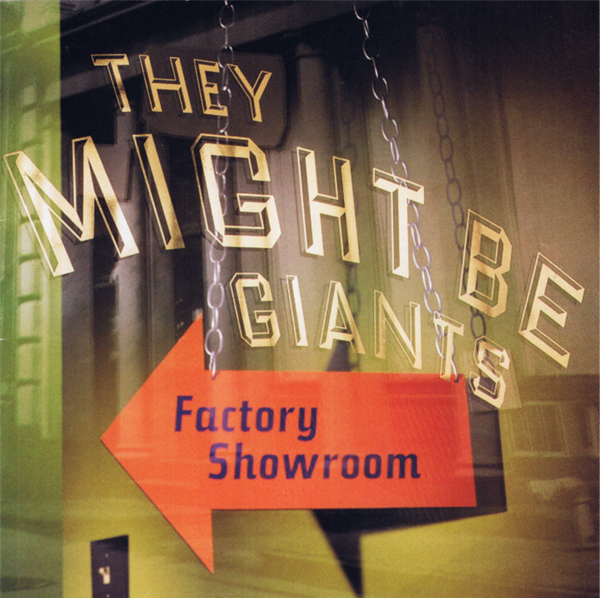
Factory Showroom
1996
(7.3)
9
At the time of its release, 1996’s Factory Showroom seemed to me to be a significant step down from 1994’s underrated John Henry. While many other fans appear to share that take, and view the record as part of a downward trajectory, one could look at it – and the remainder of the band’s catalog – in a much more optimistic light. The John Henry/Factory Showroom/Long Tall Weekend/solo “wilderness years” represented a clear delineation between two distinct eras in TMBG’s career. These albums ushered out their most experimental, influential, and trailblazing phase for the more consistent, workmanlike approach that has allowed TMBG to remain a successful, functioning, and rewarding rock institution. Factory Showroom displays that craftsman approach taking shape on a set of songs that still impress.
One for the playlist: Recognition is warranted for “New York City,” “Spiraling Shape,” and the fact that Factory Showroom managed to put a hidden track before the rest of the album (“Token Back to Brooklyn”). However, it’s the early album rave-up, “Till My Head Falls Off,” that stands as the highlight. — MR
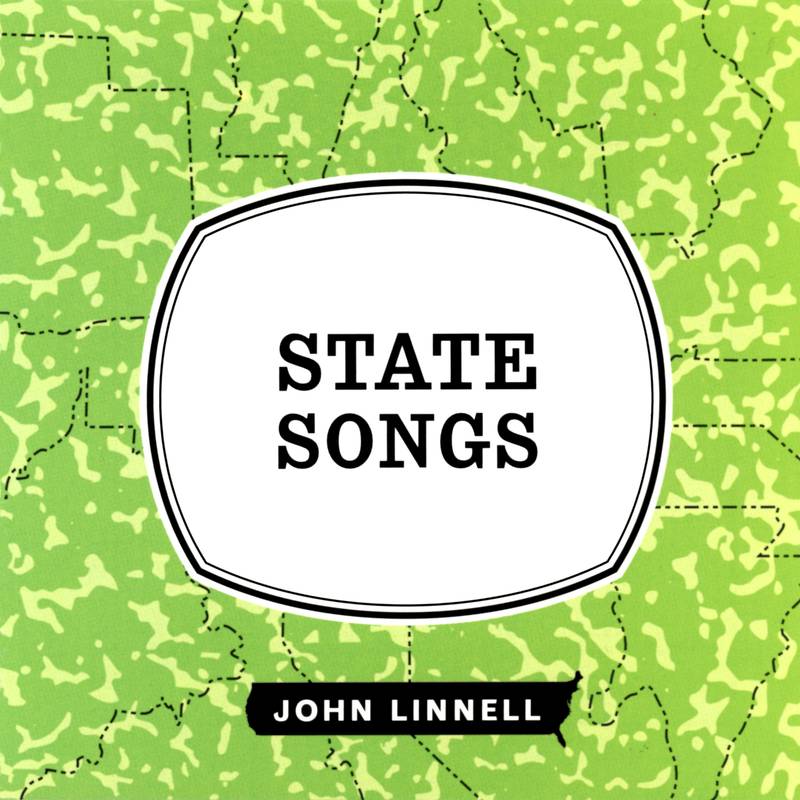
John Linnell
State Songs
1999
(7.5)
8
I mean no offense to John Flansburgh, but throughout listening to TMBG’s entire discography, it’s become abundantly clear that I prefer John Linnell’s songwriting. To me, the proof of that, ironically enough, comes from Linnell’s only album outside of They Might Be Giants: 1999’s State Songs. While not actually a concept album about the fifty states, Linnell’s solo debut could easily be mistaken for a mid-nineties They Might Be Giants record, based solely off of the energy and creativity that oozes from the songs. There’s a momentum that the entire album maintains that makes even its weaker elements worth a listen.
One for the playlist: While songs like “West Virginia,” “Montana,” and “Maine” stand amongst the best that he has ever written, “South Carolina” is a master class in how to write a catchy pop rock song in a way that only John Linnell could do. — RG
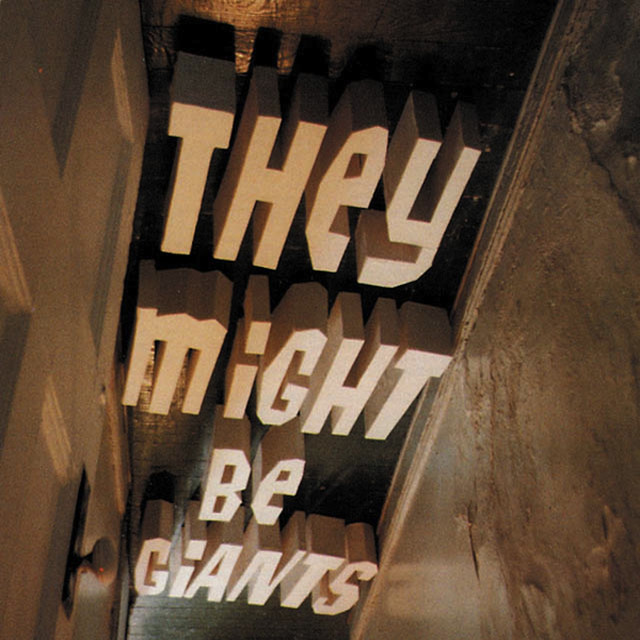
Miscellaneous T
1991
(7.8)
7
In the intro, I mentioned having always considered this 1991 compilation as part of TMBG’s main catalog. I never had my own personal copy of Miscellaneous T (I did borrow my brother’s regularly), but these tracks became embedded as part of the band’s canon when I acquired them as part of the 1997 compilation, Then: The Earlier Years – essentially just generously-expanded versions of the group’s first two albums. Well sequenced, Miscellaneous T sounds like another TMBG record, and an excellent one at that. While some diehards may take this as yet another opportunity for us to push the narrative that They Might Be Giants peaked early, this really does stand as one of their most satisfying collections of songs.
One for the playlist: There are some real gems here, including “Nightgown of the Sullen Moon,” “When It Rains It Snows,” and “It’s Not My Birthday.” That said, it’s the opening ode to payola, “Hey, Mr. DJ, I Thought You Said We Had a Deal,” which is the most classic of these classics. — MR
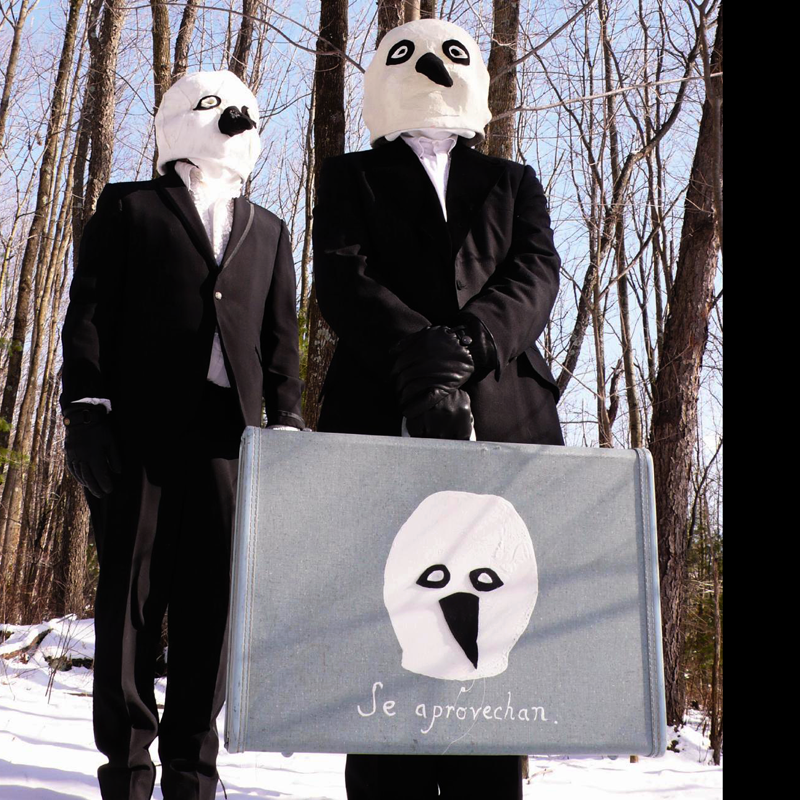
The Else
2007
(8.0)
6
After a decade of albums with consistently declining receptions, They Might Be Giants returned to their mid-nineties form with the release of 2007’s The Else. Not only does The Else hold up next to albums like John Henry and Factory Showroom, I would argue that it’s the most cohesive the Johns’ songwriting style has ever sounded with a live band. Maybe it was a decade-plus of practice, but The Else sounds like the first album in which the Johns really got comfortable with writing the more in-your-face power pop style that a band brought to them. It helps that some of the tracks are among the most innovative in the band’s catalog (thanks to production from The Dust Brothers). Songs like “Careful What You Pack” (which sounds like something off a Flaming Lips album), or “Take Out The Trash” (arguably the loudest TMBG has ever been) stand among the many highlights.
One for the playlist: On an album that is so energetic and fun, while still being innovative in that quintessential TMBG way, it only makes sense that the best song is the Johns’ take on The Monkees theme song. What more is there to be said? “The Mesopotamians” is They Might Be Giants making a Monkees song, and for that, it’s probably the greatest thing ever made. — RG
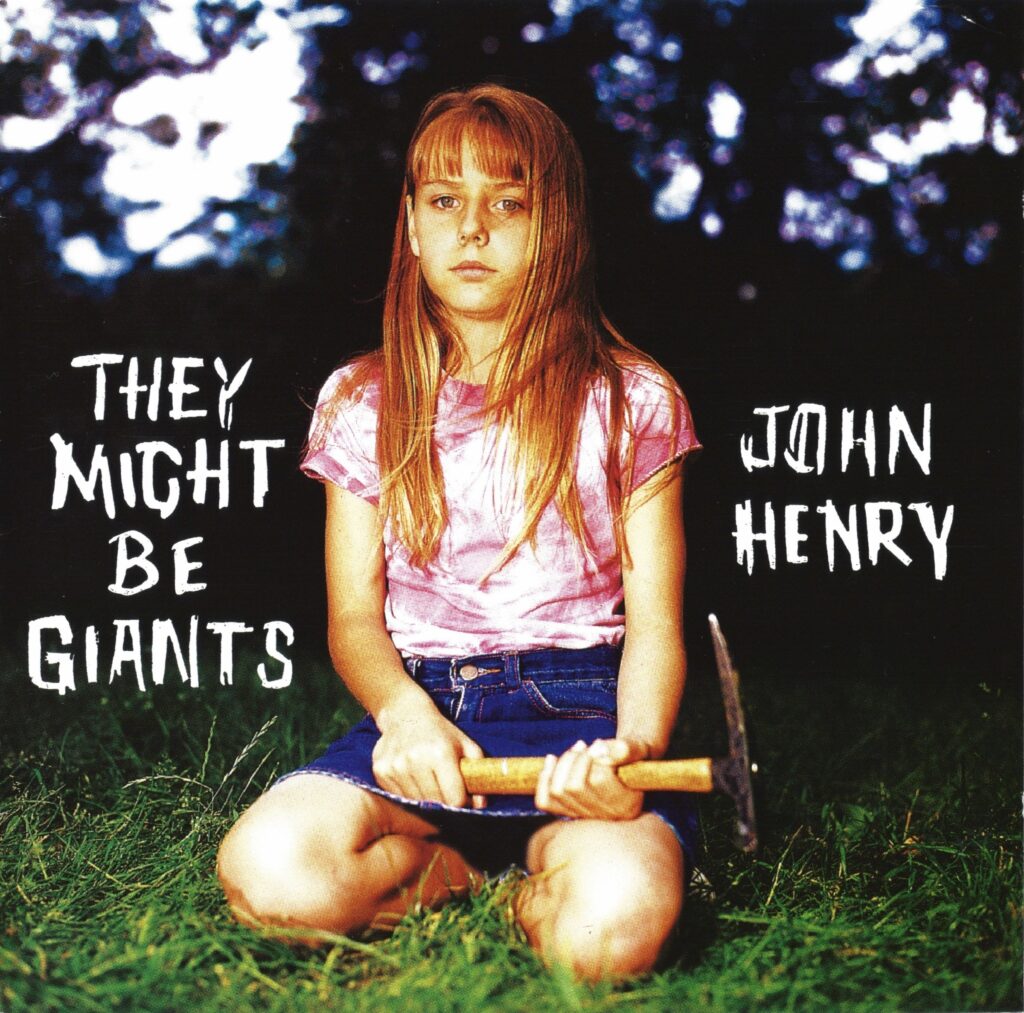
John Henry
1994
(8.2)
5
Having first heard They Might Be Giants in the summer of 1993, John Henry was the first album by the group whose release I experienced in real time. Primed for the fuller, band-oriented sound by the advance single “Snail Shell,” I actually didn’t give much thought to the fact that it represented a significant departure from the group’s earlier material. To me, it was more about being one of the earliest examples of anticipation for a new record from a band that I loved. I took to the album immediately, considering it my favorite of theirs until I heard Lincoln shortly thereafter. However, among long-time fans, John Henry was a divisive release – considered a “sell out” move by many who had discovered the band during their four-track era. Thing is, the song craft that had made the group’s first four albums such beloved indie rock pillars was still intact, even if some of their more idiosyncratic elements had been (slightly) sanded down. Nearly three decades later, John Henry remains overlooked by a large contingent of the group’s followers.
One for the playlist: There are a ton of great songs spread across John Henry‘s twenty track playlist: Linnell’s “I Should Be Allowed to Think,” “A Self Called Nowhere,” and “The End of the Tour” are rightfully considered fan favorites. One of the album’s most alluring tracks, the cryptic “AKA Driver” stands among John Flansburgh’s finest moments on record. — MR
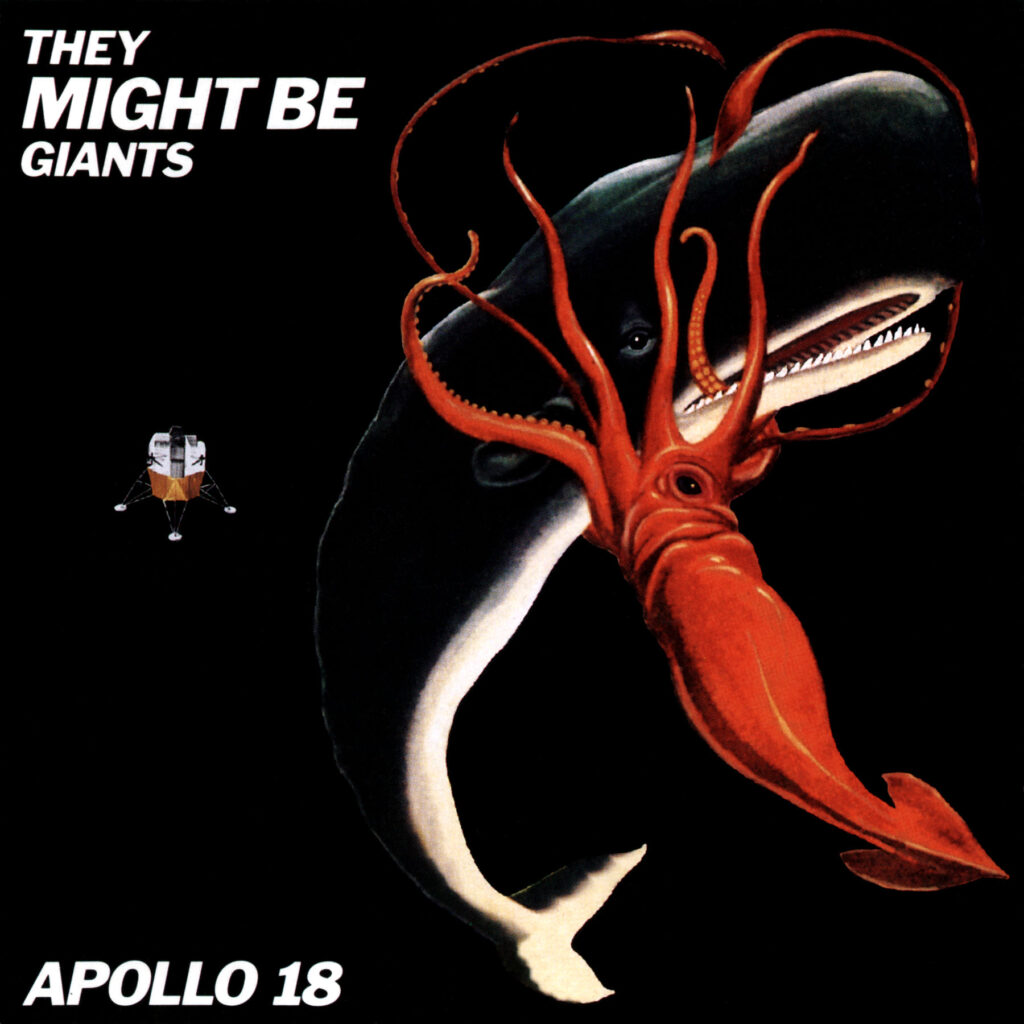
Apollo 18
1992
(8.6)
4
Apollo 18 is a crossroads album in TMBG’s discography. It was their first step into newfound fame, post-Flood and “Birdhouse in Your Soul,” while at the same time being their last album before their version of “going electric,” in the form of ditching their drum machines for a studio backing band. From the opening track (“Dig My Grave”) to the album’s lead single (“The Statue Got Me High”), the duo used Apollo 18 as a way to expand both their pop writing sensibilities, and close out their early era with some of their most experimental material. No songs on the album represent this dichotomy more than “I Palindrome I,” and the collection of twenty-one tracks, entitled “Fingertips.” Where “I Palindrome I” is structurally straightforward (albeit with some abstract lyricism), the “Fingertips” pieces forgo all sense of traditional song structure, in favor of small snippets roughly thrown together. While heightened expectations could have led a lesser band to produce a watered-down version of themselves, Apollo 18 shows just how dedicated the Johns were to keeping up their eclectic mix of pop and flat-out weird rock music that we remember them for today.
One for the playlist: For an album that deals so heavily in the lines between abstract and accessible, with lyrics that are much darker than anything the group had written before, the standout is a simple heartbreak song. Influenced by early Beatles, John Flansburgh’s “Narrow Your Eyes” stands as his greatest contribution the discography of They Might Be Giants. — RG
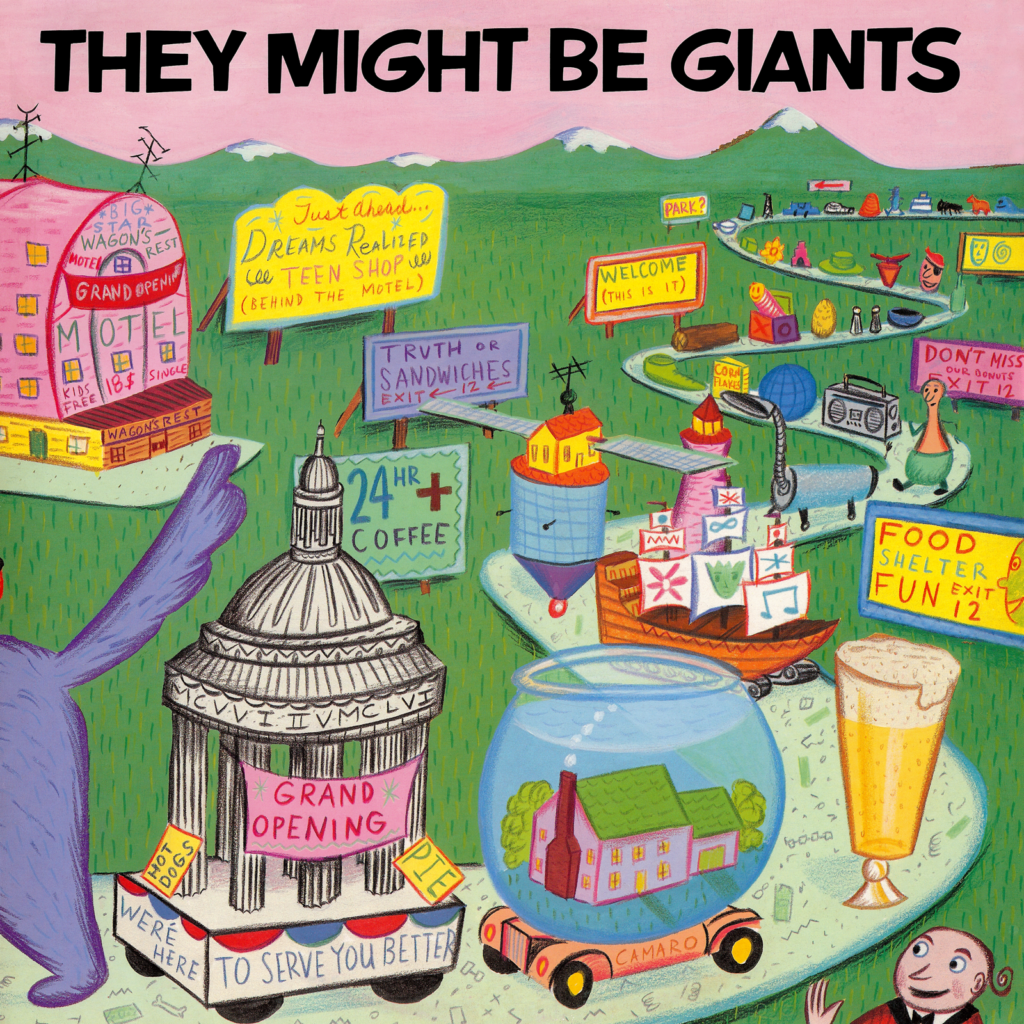
They Might be Giants
1986
(9.1)
3
My older brother bought They Might Be Giants’ self-titled debut after hearing “Don’t Let’s Start” on Phoenix’s genuinely “alternative” station, KUKQ, in the summer of 1993. I can remember him being left relatively-unimpressed by the majority of the album’s remaining eighteen songs, but they left an immediate impression on me, who – as a precocious, musically curious, thirteen-year-old dork – was squarely in the band’s target demographic. I’d eventually procure that copy of They Might Be Giants in some sort of CD swap, but from day one, it always felt like it was my album, not his. At his encouragement, I learned to start playing my first “real” instrument (the bass) that summer. Along with a Casio Tone Bank keyboard and a repurposed home karaoke machine, I began making solo bedroom recordings within weeks of hearing They Might Be Giants for the first time. Even if I hadn’t made a rudimentary cover of “Rabid Child” one of the first of these recordings, the inspiration for this kind of homemade labor of love should have been obvious.
One for the playlist: Our agreed-upon parameters meant no “Don’t Let’s Start,” but the album’s other masterpiece was still eligible. Few bands would attempt a love song as off-kilter, cryptic, and utterly charming as “She’s an Angel,” but only They Might Be Giants could actually pull it off. — MR
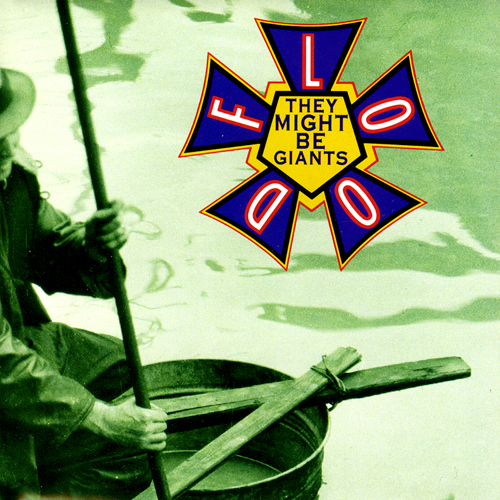
Flood
1990
(9.2)
2
While we don’t have Flood at the top of the list, one could certainly make an argument that it is the definitive They Might Be Giants album. After all, with their highest-charting single (“Birdhouse in Your Soul”) and a pair of tracks that found their way onto Tiny Toon Adventures (“Istanbul (Not Constantinople)” and “Particle Man”), Flood brought the group their closest brush with a mainstream audience – aided by the fact that it was their first record released by a major label. While this encounter with conventional success may have only registered as a blip in the larger public consciousness, it ultimately helped to earn the group a meaningful cache of life-long fans.
In the end, Flood merely stands as one entry in a virtually-flawless initial run of albums. It may have presented a slightly “slicker” version of TMBG than the one who appeared on their first two indie label releases, but this is still the work of a deeply idiosyncratic pair of songwriters. While there is no shortage of memorable hooks, Flood is also packed to the brim with genuinely head-scratching moments – the very kind that had originally made Linnell and Flansburgh a standout attraction on New York’s weirdo underground art scene. That it was packaged by a major label and marketed to both kids and late-night television audiences only further proved that the Johns had pulled off quite an impressive coup.
One for the playlist: The aforementioned trio of songs only represent the tip of the iceberg for a truly rich album. Favorites abound, such as the jaunty “Lucky Ball and Chain,” poignant “Dead,” acerbic “Your Racist Friend,” and grandiose “Road Movie to Berlin.” Simply put, Flood has long been a staple of mixtape makers. A long-time personal fave, the power pop raver “Twisting,” gets the call this time around. — MR
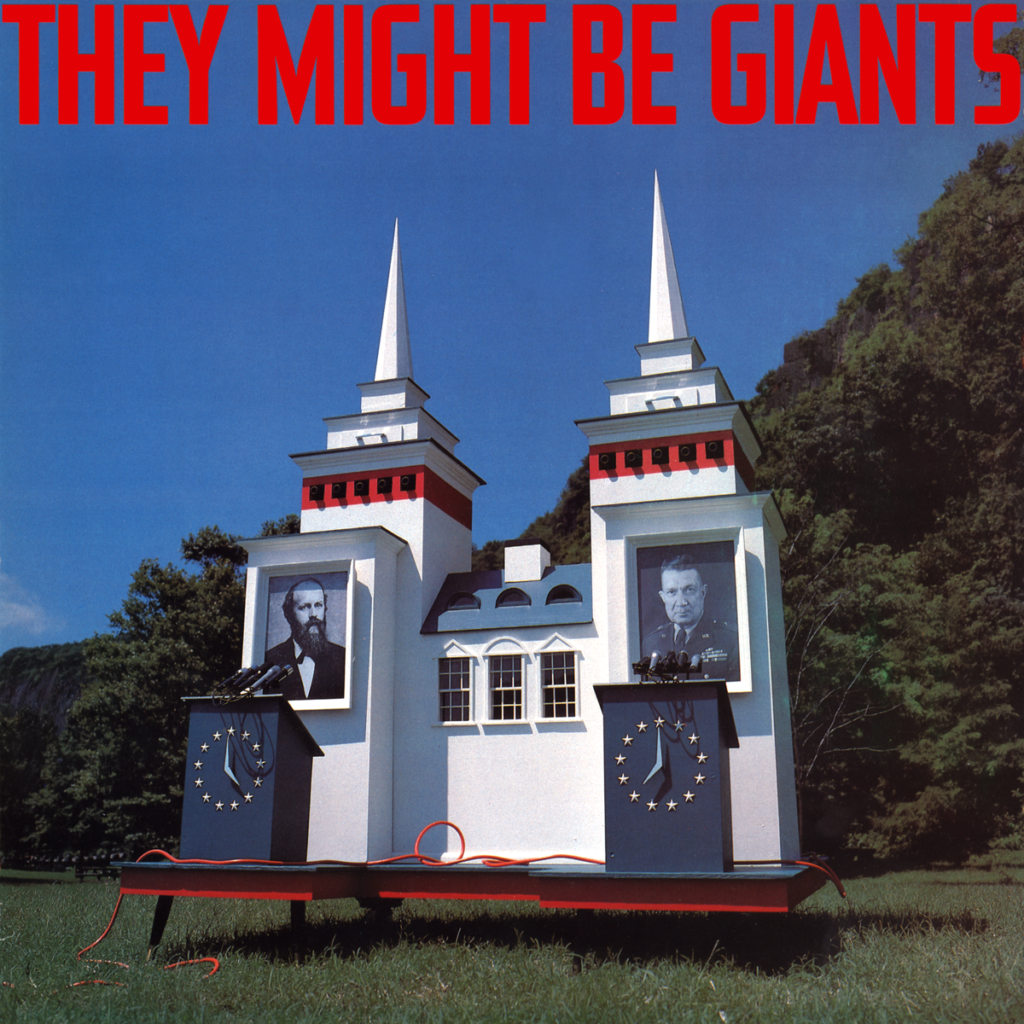
Lincoln
1988
(9.6)
1
While I’ve enjoyed most of They Might Be Giants’ discography, there was never any doubt in my mind that Lincoln would end up on the top of this list. Every single great thing about TMBG is done best on Lincoln; their best eclectic genre workouts are on this album, their best odd experimentations are on this album, and their best hooks, melodies, and lyrics are all on this album.
From the outset, John Linnell shines with the angular and surreal “Ana Ng,” which would later become (arguably) the most iconic song of their entire discography, and would also set the bar for Lincoln’s more accessible songs, like the sarcastic “Purple Toupee,” or the heartbreaking “They’ll Need a Crane.” Not to be outdone, Flansburgh’s contributions – particularly “Santa’s Beard” and “Snowball in Hell” – show a pop sensibility that would only be built upon in the years to come.
Perhaps the album’s most ear-catching moments come from tracks like “Lie Still, Little Bottle,” “Mr. Me,” and “Pencil Rain,” which also showcase the more eccentric and out-there qualities that TMBG would come to be known for. While Lincoln’s songs move back and forth between accessibility and experimentation, the thing that makes it stand out in their catalog is how smoothly those two sides work when used at the same time. Throughout the album, catchy melodies are surrounded by abstract sampling, jazzy interludes, and new wave rhythm guitars, each playing their part in creating the greatest They Might Be Giants album.
One for the playlist: While “Ana Ng” and “They’ll Need A Crane” stand amongst the best songs of all-time, no single track represents the diversity and innovation of Lincoln better that Linnell’s “Where Your Eyes Don’t Go.” Perfectly mixing the creativity brought upon by the limitations of drum machines and keyboards, the most captivating thing about this track comes from the duo’s propensity to write surreal and borderline creepy lyrics. — RG


